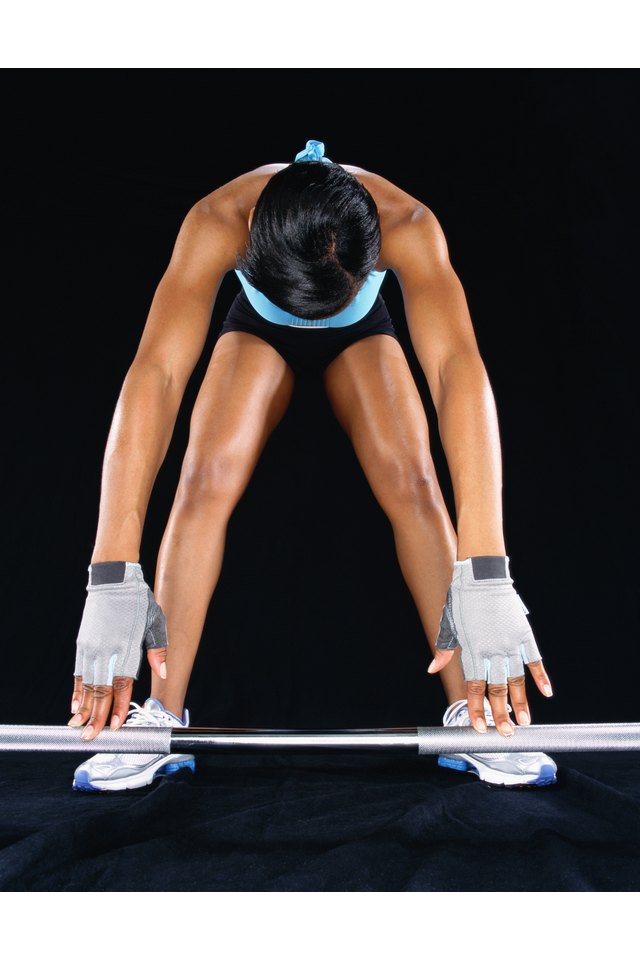Do You Add Heavier Weights for a Bigger Butt?

If a full-figured backside came from cardio and light weightlifting, everyone would have one. Unfortunately, building up your gluteal muscles doesn't come from minimal resistance workouts. To attain a voluptuous rear, you need to lift heavy weights in a progressive manner. Learn how lifting heavy weights can help you attain a bigger butt.
Build a Better Backside with Heavier Weights
Gluteal hypertophy -- growth of the butt muscles -- is key to building a bigger butt. Strength training induces microscopic tears in the muscle fibers which initially create muscle soreness and then cause the muscle to rebuild itself bigger and stronger. Muscle growth is best attained through moderate to heavy strength training that allows for six to 12 repetitions. If you can perform 20 bodyweight squats, for example, you aren't challenging your muscles to grow. To enter the muscle-building zone, begin using weights that would allow for no more than 12 repetitions.
The 2-for-2 Rule
Selecting an appropriate weight is essential for gluteal development. According to the National Strength and Conditioning Association, a helpful approach to increasing weight is using the 2-for-2 rule. If you are using a weight that allows for two more repetitions than the repetition goal in the final set of an exercise -- for two consecutive training sessions -- then increase the weight for the next training session. For example, if you were aiming for 10 reps on a deadlift with 75 pounds and you were able to complete 12 reps on your third set and this occurred two training sessions in a row, you would increase the weight to 80 pounds in the next session.
Keep the Glutes Guessing
After roughly four weeks of using the same exercises, your glutes will adapt and stop growing. At this point, switch up the exercises to provide a new muscle-building stimulus. Some of the top gluteal exercises to choose from are squats, deadlifts, lunges and hip thrusts. If you're new to strength training, choose one exercise and do two sets per workout. Aim to complete two to three workouts per week on non-consecutive days. If you're a strength-training veteran, select up to three gluteal exercises per workout and complete three sets on each exercise. Plan on completing two to three workouts per week on non-consecutive days.
Safety First
Heavy weightlifting can be dangerous if proper form is neglected. Never take a set past technical failure -- the point at which form begins to break down. In other words, don't sacrifice proper form for heavier weights. Always begin workouts with an adequate warm-up -- five to 10 minutes of jogging, jumping jacks, body-weight squats and butt kickers. Contact a certified personal trainer if you are unsure about your form on any exercise. Consult your doctor before making any significant changes to your exercise program.
References
- NSCA's Essentials of Personal Training: Roger W. Earle and Thomas R. Baechle
Writer Bio
Paul J. Fabritz is the founder of PJF Performance LLC, a fitness company based in Tempe, Ariz. Fabritz specializes in athletic performance enhancement, and is certified through the NSCA-CPT, ACE and FMS.
